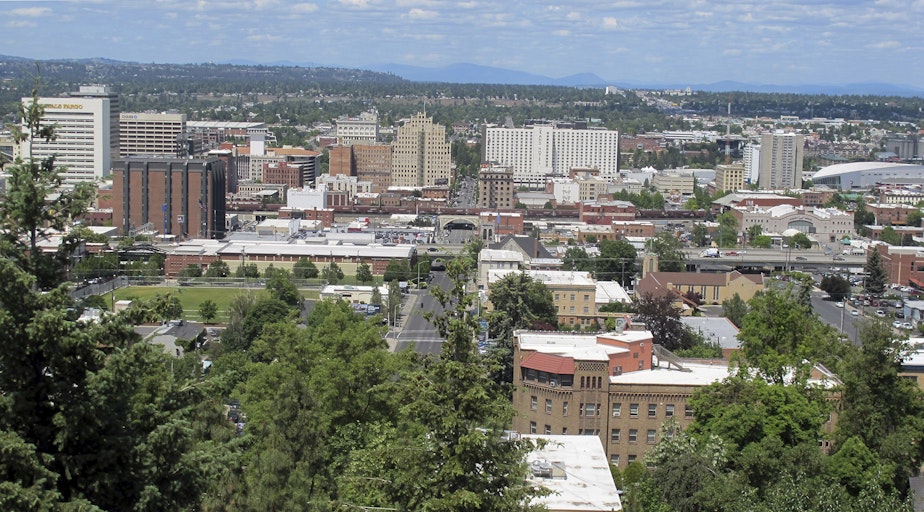Spokane declares an emergency over its largest homeless encampment

At one point this summer, Camp Hope swelled to more than 600 people. It's since shrunk to around 450 people living in tents, RVs, and makeshift shelter on a dirt lot by I-90.
Local and state officials agree the camp should be cleared eventually. But just how soon, and where residents will go, is at the center of a months-long debate.
Camp Hope originated as a protest in front of Spokane City Hall drawing attention to the lack of available shelter-beds. When the city moved protestors from in front of the building, they went to an empty dirt lot in the East Central neighborhood. Today, a single dirt road runs through the middle of the dense camp, which is encircled by a shrinking privacy fence covered in plastic.
"I've been told that people who live in those clusters are more closely connected to each other," said Carl Segerstrom, a reporter and co-owner of Range Media in Spokane. "They're like kind of little micro-neighborhoods."
The current debate over how to address Camp Hope is a result of competing jurisdictions. The camp officially sits on land owned by the Washington Department of Transportation (WSDOT), but both the City of Spokane and the Spokane County Sheriff want to enforce the removal of the camp. For local officials, concerns over crime and drug use are of top priority. But WSDOT is stalling attempts to completely clear the camp.
"The state has been really non-committal about setting any guidelines for the removal of the camp," Segerstrom said. "And they've instead urged the patient approach, ask people to recognize their progress. They say the reason is that they're not going to move people off the encampment until they have permanent supportive or transitional housing for them."
Spokane County recently made an emergency proclamation over the camp and is looking to unlock more funding for housing options, with the intention of meeting the state's requests for shelter availability and to expedite the camp's closure. The closest estimate is a Nov. 15 deadline, but that could push farther into December as the city onboards a new hotel as a shelter option.
Sponsored
Last month, local business leaders in the area surrounding Camp Hope spoke about increases in crime and drug use in the neighborhood.
"There's been major increases, specifically in property related crimes around the camp," Segerstrom said. "And those voices that are complaining or are frustrated by that, they're the ones that are the loudest in the ears of county and city leadership."
For now, Spokane shelters are taking on residents leaving Camp Hope, largely at the Trent Resource Center, a warehouse in the industrial area of Spokane.
While WSDOT has delayed any sweeps, there's a common consensus that the camp needs to be removed. WSDOT is concerned, however, that rushing a sweep would erase their outreach efforts and erode trust with homelessness outreach services in the area.
"I don't think anyone, including the people living there, would tell you that that's where they want to live forever" Segerstrom said. "But the question is, is the answer to get off the land now and get into a shelter? Or stay there until there's housing options that are better than a shelter?"
Sponsored
Listen to the full conversation with Carl Segerstrom by clicking the audio above.
You can read Segerstrom's reporting on Camp Hope by clicking this link.


